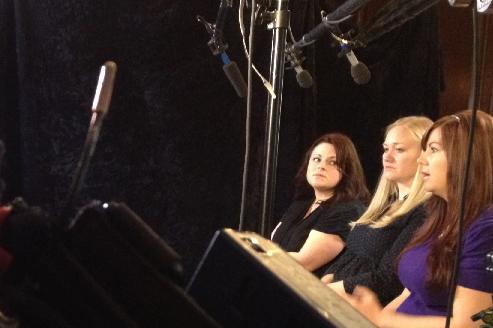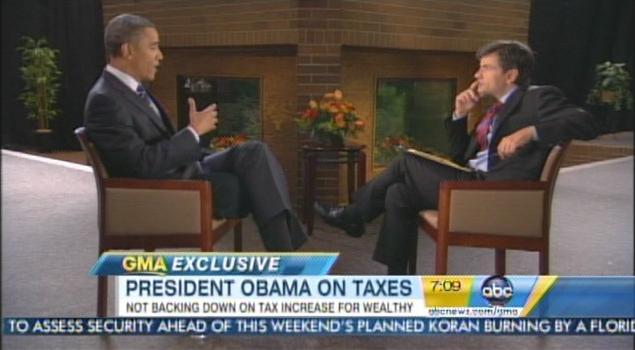Booms vs Lavs
Why it matters for talking head interviews
This has been a passion of mine for a very long time and there simply isn't any reason for this to be a struggle other then a lack of education about sound in the industry. Sometimes the lavalier is the correct choice but I'd put that in the less then 5% range.
If a producer asks me why I'm using booms I happily explain that a $2,000 microphone has a far greater fullness in its tonal quality then does a $400 lavalier. Fortunately, I rarely get questioned on my microphone selections.
The other challenge frankly.... Is there are a lot of bad sound mixers & DP's in television. DP's hire the kid next-door or their buddy and pass them off as mixers. Clip on a lav and then we have to clean up the mess with a producer who comes to distrust the craft as a whole. A lot of this gained legs when the networks tried to save money by cutting out the sound person which lead to a proliferation of bad TV and damaged the craft severely. The networks have since rebounded from that quite a bit having suffered through too much unusable material but as I said... The craft has been damaged.
Enough of the backstory!
When I say boom I am referring to a quality microphone such as a Schoeps CMC MK41 (my personal preference) and not a cheap knockoff type of mic. There are of course several fine microphones to choose from but thats a debate for another day. Contrary to some beliefs they do not have to match but they do need to live on the same shelf. An example is that I have no problem utilizing a Schoeps CMIT5U on a corrospondent and CMC MK-41's on the guests. The correspondent is typically a "dirty" shot (meaning it includes the guest shoulder) and lives a bit wider. In example #1 above you'll see a three shot with 2 CMC MK-41's and 1 CMIT5U. I wanted a little extra reach for her and that setup was a beautiful thing.
What does an overhead bring to the party besides a fuller, richer sound. It brings freedom of movement. Chest clutches are once again good tv. There is one guarantee with an emotional interview... The person will grab that lav when they get upset and there is nothing you can do about it. God help the sound pro that stops an interview during a meltdown. Movement is sometimes cited as to why they don't want booms. The fear that they'll move to and fro to much. This is so rare over the course of my career I've completely discounted it. I tend to mic with forward movement room available anyways and that much movement would be a problem with either technique not to mention the fit it'll give the DP with the focal plane.
So how about that 3rd profile camera or LPS (little piece of shiite) gliding along the slider? In example #2 below that interview with President Obama and George Stephanopoulos was recorded with 2 Sennheiser MKH 416's. The vast majority of time the extra cameras aren't an issue for booms including that direct profile shot (I personally dislike that shot). If you see the booms then you're most likely seeing the key lights.

Example #1 -- Don't be afraid to mix it up.
This pic is from a Dateline NBC job

Example #2 - The hard profile shot doesn't have an impact
on the use of booms. I recorded this interview with
two Sennheiser MKH 416's
A back story on the POTUS interview. The producer was young and very nervous about interviewing the President. He was definitely neverous about the booms and when George arrived the producer started to gently bring up the booms when Mr Stephanopoulos cut him off by saying, "I know aren't they the best!"
Another producer just became a fan of overhead micing! :-)
BTW - An excerpt from this video is available on my vimeo channel if you'd like to have a listen. It was a crash turn around so notice the paper shuffling from George's lap while POTUS is talking. It drives my point home. Don't count on post to mix.
Remember, we are mixers, I coined a personal phrase many years ago regarding the talking head interviews. They are an exercise in... "A little up and A little down". Even if you have a 1 on 1 with the camera left/right recording as iso's I'd strongly recommend monitoring in mono. It not only protects you if they just hit play and sum your tracks together it also builds the very good habit of mixing larger interviews and verifying that your gain structures are sound. It becomes second nature to add in 3rd and 4th microphones. The only real difference is you're focusing on who is about to speak and learning how folks telegraph that. Its the sweet spot in the "A little up, A little down" that you find. The point that a microphone is far enough out of the mix but close enough to bring it back while simultaneously dropping out another one.
Below is a link to a recent ABC 20/20 I did that has a built in example of booms vs lavs. The first half of the clip is my interviews with booms and the last clip is of another crews use of lavaliers. I laid in some production stills of my setup so you can see what I had going on for that job. I chose the 2 on 1 interviews because they demonstrate how well the booms really work.
When you walk into a room you have about 3 seconds to voice objections to the sound before the DP falls in love with the image! Actually in my world of production, crews are teams of 2... Sound & Picture, both working closely together and both working to make the compromises necessary to make the most out of the hand we're dealt that day. A brief example of how I approach things. We walk into a stunning church as a possible interview setting. It sounds horrific but I immediately offer a solution to shoot from a vestibule. Out of respect for my craft the DP strives to make that work. We both compromise but the project is better because of it.
There are a lot of aspects to consider but at the end of the day all we have to sell is quality. There is no comparison on that front, the boom wins that battle 95% of the time.
Thom Shafer
www.televisionsound.com / Thom Shafer
Home ----- Photos ----- Tech Tips ----- Credits/Reel ----- Contact Me
"Being a great mixer is knowing what sounds good and what doesn't as it applies to the situation you find yourself in..." - Thom Shafer